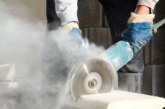Tradespeople spend a lot of time in their clients’ homes, and with levels of seasonal infections, such as flu, soaring in recent weeks, it’s important that precautions are taken to protect both workers and customers as much as possible.
Keeping workspaces clean is crucial as harmful bacteria can live on surfaces for weeks at a time.
In fact, new research by IronmongeryDirect, the UK’s largest supplier of specialist ironmongery, has revealed that door and cabinet handles are covered in up to eight times more bacteria than the average toilet seat.
The company swabbed door and cabinet handles around multiple homes to reveal the areas where bacteria is most likely to linger, and found that internal bathroom door handles are the dirtiest, with an average of 93 bacteria colonies per cm2 of surface (CFU/cm2). This is almost eight times dirtier than a toilet seat (12 CFU/cm2).
The kitchen is also a hotspot for germs, with food and cutlery cabinets hosting four times as many bacteria colonies as a toilet (54 vs 12 CFU/cm2).
The dirtiest handles in the home are:
|
# |
Item swabbed |
Average CFU/cm2 |
|
1 |
Bathroom inner door |
93 |
|
2 |
Bathroom outer door |
57 |
|
3 |
Kitchen cabinet |
54 |
|
4 |
Living room door |
52 |
|
5 |
Bedroom cabinet |
47 |
|
6 |
Front door |
31 |
|
7 |
Kitchen door |
31 |
|
8 |
Toilet seat |
12 |
With this in mind, IronmongeryDirect has partnered with Caroline Rowney, Director at Bacteria Busters, to share advice for tradespeople on how to stay safe when working in clients’ homes.
Caroline explains the consequences of not cleaning handles and how to thoroughly remove bacteria.
“Door handles are an excellent place for bacterial transference and harbour germs for far longer than other surfaces. Bacteria and germs such as Salmonella, Covid-19 and MRSA can survive on handles for hours, days and even weeks.
“It’s therefore important to keep handles clean when moving around a property:
1) Isopropyl alcohol spray – “If you are in a hurry, a quick spray of this will kill most germs.”
2) Warm soapy water – “For the best finish and a more thorough clean, soak a cloth in a bowl of warm water and dish soap, and, after wringing it out, use that to clean the handles.”
3) Clean cloth and wax – “Wipe away the moisture with a clean, dry cloth and then use another to smooth a little wax over the handle, leaving it shiny and fresh.”
Dominick Sandford, Managing Director at IronmongeryDirect, said: “Tradespeople naturally have a lot of contact with the public and spend large portions of their working week inside other people’s homes. This exposure to others perhaps makes them more vulnerable to catching infections, especially at this time of year, so ensuring their work environment is as clean as possible is really important. Our research has shown that particular care should be taken to ensure door and cabinet handles are free of bacteria.”
For more information about the research, including additional swabbing images and expert advice on keeping handles clean, visit: https://www.ironmongerydirect.co.uk/blog/experts-share-how-to-clean-to-clean-your-door-and-cabinet-handles









